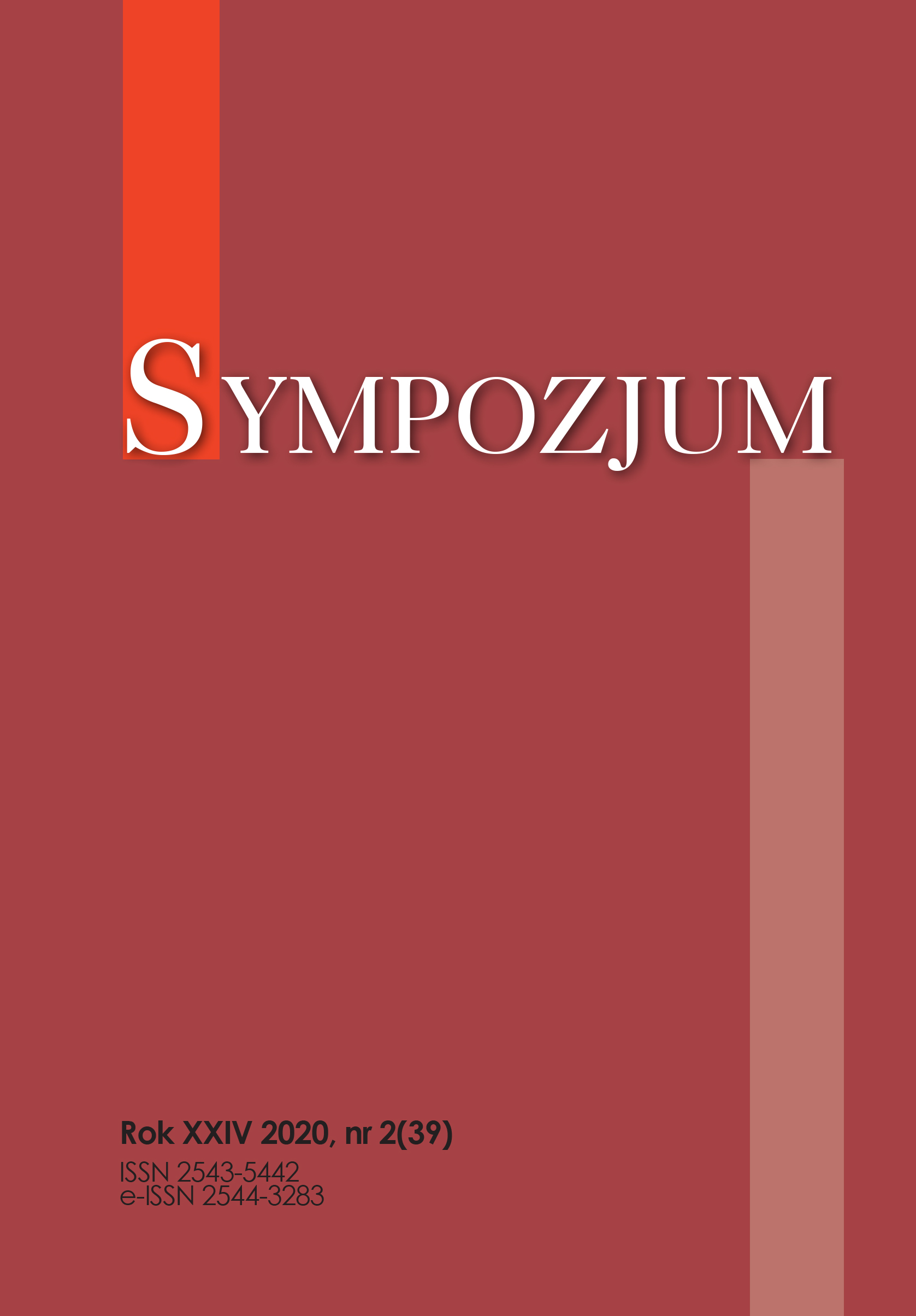
We kindly inform you that, as long as the subject affiliation of our 300.000+ articles is in progress, you might get unsufficient or no results on your third level or second level search. In this case, please broaden your search criteria.


Although more than half a century has passed since the adoption of the dogmatic constitution on the Church at the Second Vatican Council, a discussion continues in the Catholic Church and in ecumenical discussions about the correct interpretation of the conciliar expression „Ecclesia in et ex Ecclesiis”. The subject of this article, therefore, is an analysis of the conciliar and post-conciliar teaching of the Catholic Church and the ongoing theological discussion on the mutual relationship of the universal Church and the local Church.
More...
One of the key questions with which contemporary theology has to deal is providing support for art, so that it could perform its tradition-honoured role of a „mediator” in relation between man and God. Works of art, especially paintings, have proven their unquestionable value in this respect more than once. The unique role of paintings finds its manifestation particularly in prayer which constitutes a privileged place of meeting between man and God. Artistic creativity in its internal dynamism may constitute substantial aid in this respect, since it not only provides the believers with actual visualisations of religious themes, but also conveys the example for man of how to go beyond oneself, which plays the fundamental role in religion and spirituality.
More...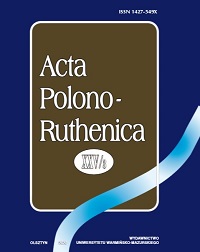
This article deals with regional toponyms in their lexical and semantic aspects and analyses the way oeconyms and hydronyms are related to topography and landscape peculiarities of Pripyat Polesie, events in this region, spiritual and material culture of the local population and its linguistic contacts with other ethnic groups.
More...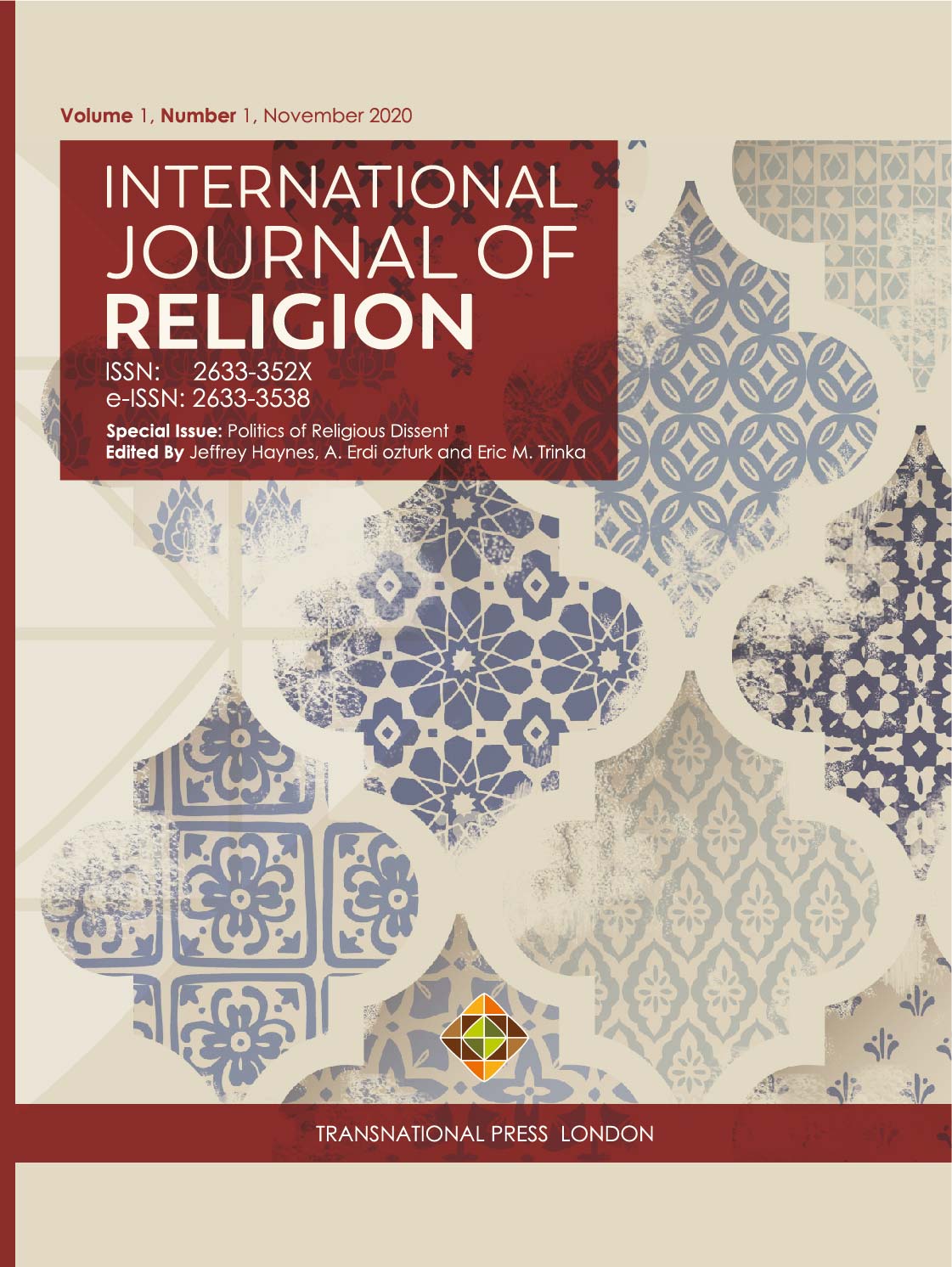
There exist severe restrictions over religious dissent in most Muslim-majority countries. This problem is associated with the alliance between religious and political authorities in these cases. I argue that the alliance between Islamic scholars (the ulema) and the state authorities was historically constructed, instead of being a characteristic of Islam. Hence, the essentialist idea that Islam inherently rejects religion-state separation, whereas Christianity endorses it, is misleading. Instead, this article shows that the ulema-state alliance in the Muslim world was constructed after the mid-eleventh century, as well as revealing that the church-state separation in Western Europe was also historically institutionalized during that period. Using comparative-historical methods, the article explains the political and socioeconomic backgrounds of these epochal transformations. It particularly focuses on the relations between religious, political, intellectual, and economic classes.
More...
This article describes the religious worldview of the residents of three rural villages, established since 2010 in Southern Israel. Focusing on religious authority, the article traces the complex relationship between rabbis to their communities which is rarely a simple “top-down” traditional authority model. On the contrary, both the rabbis and their communities are aware of the fragility of their relationship, and therefore created a complex belief system in which the rabbis’ recommendation is sought, but not necessarily considered binding. In addition, the article describes the “Datlshim” (Hebrew acronym for “Ex-religious”). This liminal identity characterizes individuals who grew up within these religious communities but decided to dissent in their adulthood. They do not feel committed to, and sometimes openly reject Jewish religious code. The article contributes to the scholarly understanding of religious authority, as well as the diversity within the religious-Zionist community in Israel, which has become increasingly influential is Israeli politics and society.
More...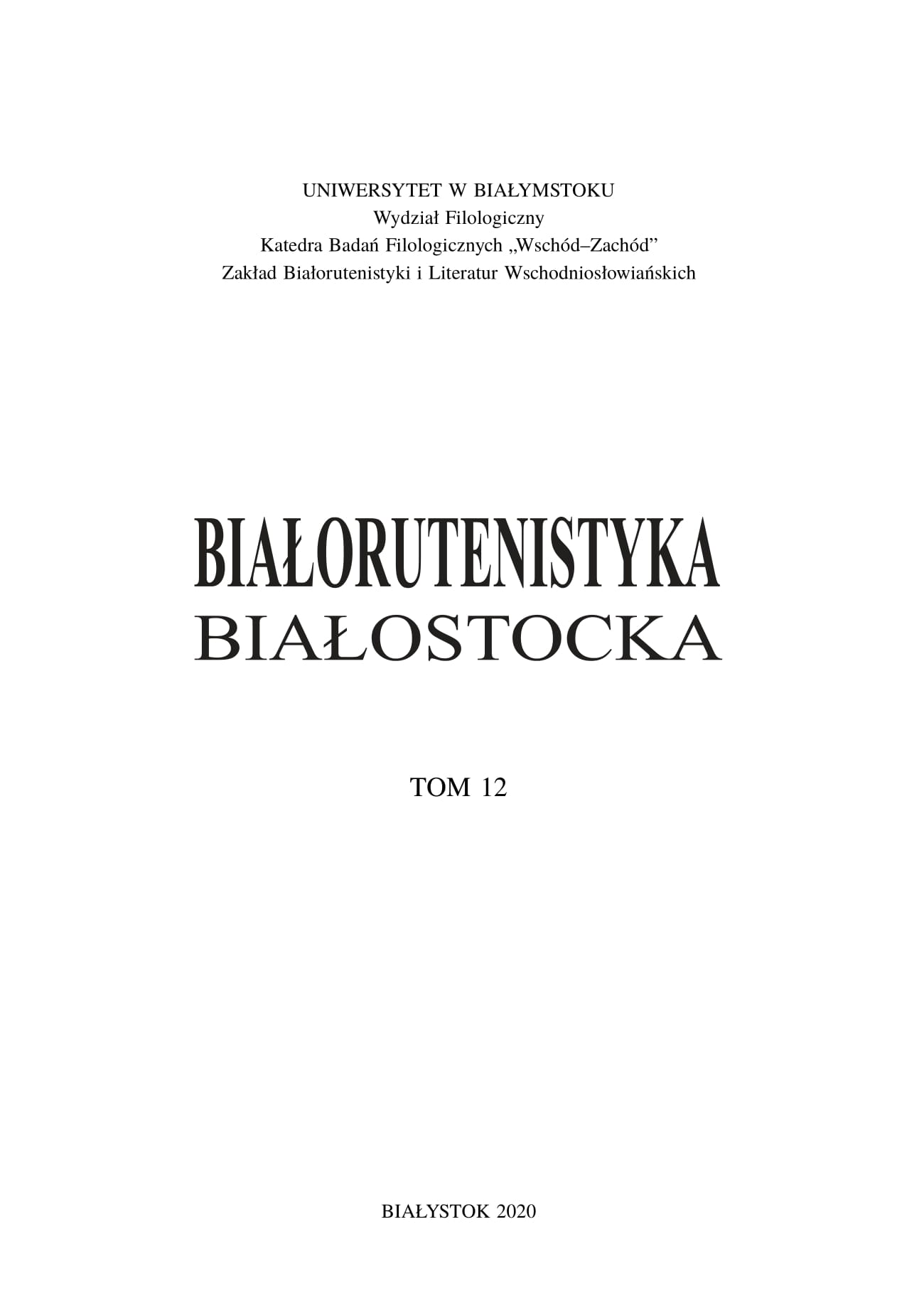
The beginnings of the 20th century in the orthodox Parish of the Holy Ascension in Kleyniki are associated with the active commitment of the Chlebcewicz family. Their presence and activity in the Klejniki parish left a significant trace in shaping the mentality and awareness of the inhabitants of the village and its surroundings. Jan, Evgeny and Vladimir Chlebcewicz were precursors in their actions and intentions They were many years ahead of the era in which they lived. Twenty years Jan Chlebcewicz spent in Klejniki were marked by intensive pastoral work, social activity and great effort devoted in particular to the development of the orthodox – parochial education and the opening of several orthodox – parochial schools as well as a library with a reading room. Evgeny Chlebcewicz was an exceptionally intelligent man with a spiritual and religious upbringing as well as a perfect erudite. He was interested in literature, folklore and history. Vladimir Chlebcewicz participated in the February revolution in 1917 in Petrograd (now St. Petersburg), where he died in the bloody riots. The ethnographic sketch describing the village of Kleyniki before World War I “Sielo Kleyniki pered bezhenstvom – vo vremia mirovoy voyny” is one of his most important works in which he draws a picture of simple life of local parishioners.
More...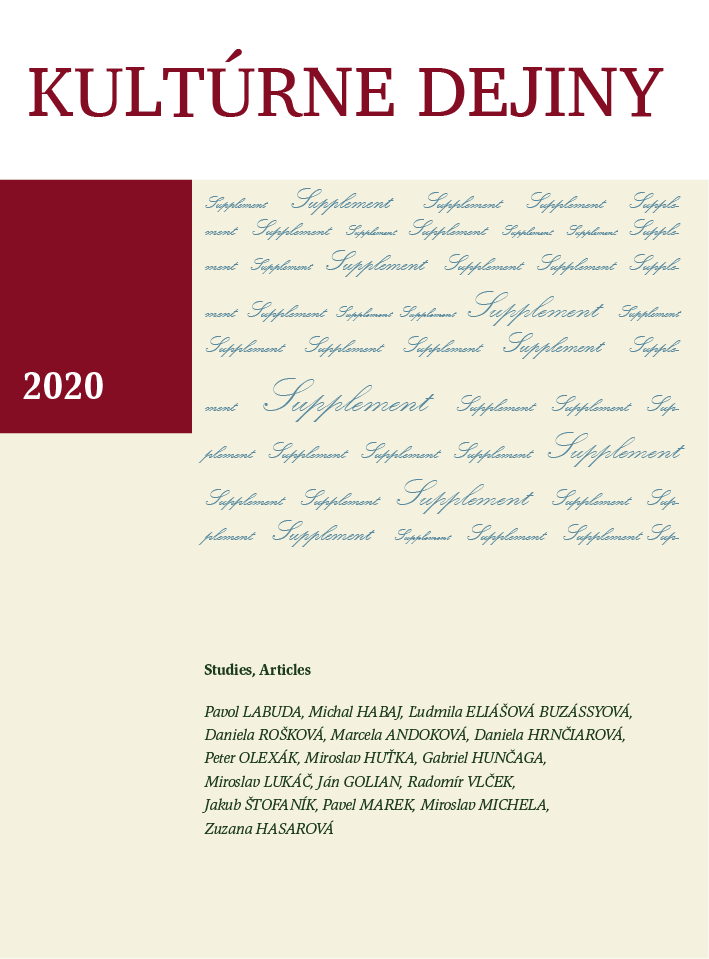
The counties (comitatus) of Hont and Zvolen – Hungarian administrative historical regions – were affected by the reformation as early as in the first third of the 16th century. As time went on, a number of urban and rural parishes, or initially clerical estates, passed into the hands of Protestant landlords and the residents changed their religious denomination accordingly. The original Catholic churches – built in the majority of these places and having a particular patron – lost their character of places of worship. The cult of the church´s patron saints deteriorated or was ignored. In some localities, it ceased to exist, was transformed or completely changed. In some places, the Catholic landlords regained possession of Protestant communities (Lutherans). This fact could have had and in some cases it surely had an impact on the revival of the same or a different cult. The paper deals with this issue, using the example of sacral buildings of two neighbouring sites, namely the town of Krupina and the village of Žibritov. The author of this paper observes that Protestants did not have any direct influence on the change of patrociniums. It is only possible to talk about an indirect influence (in terms of slipping quietly into oblivion, ignorance or a total absence in documents). Changes in patrociniums or multiple modifications of inventory in the sacral buildings (altars) were only possible due to the recatholisation efforts of the administrator in the parish of Krupina (the parish priest) and the landlord in the village of Žibritov (the Koháry family).
More...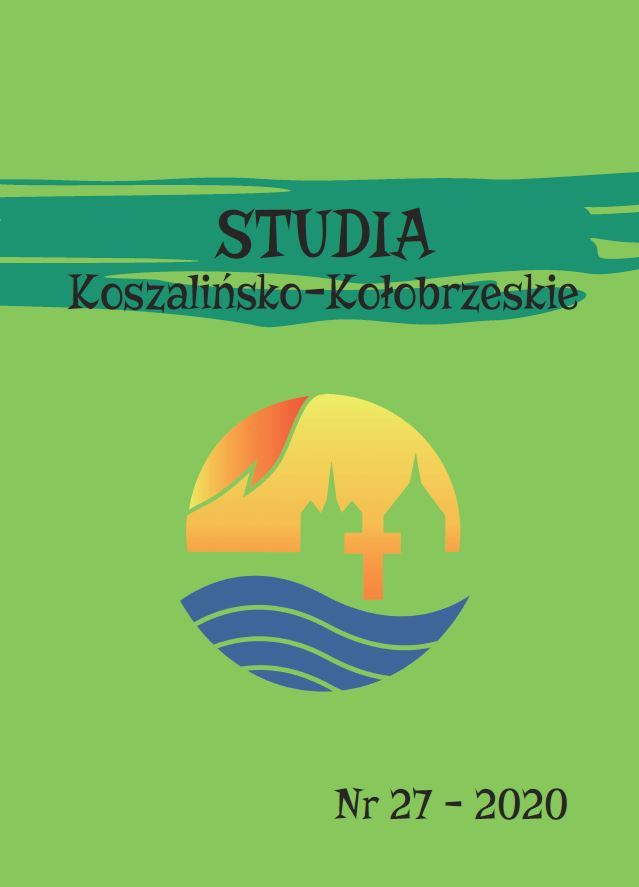
A copy of the goblet and paten of Konrad Mazowiecki, made on the basis of the original from the mid-thirteenth century, was made as part of the research work of the Department of Practical Theology at the Faculty of Theology of the University of Szczecin in cooperation with the “ArtSacr” studio of Jerzy Stachurski Master of Artistic Craft. The chalice and paten offered to the Płock cathedral are an act of reparation of the Mazovian prince Konrad for the murder of priest Jan Czapla, canon of the Plock (Płock) cathedral chapter, Plock (Płock) and Wloclawek (Włocławek) scholastics, made in Plock (Płock) in 1239. The Konrad Chalice is one of the most outstanding works of art from the Middle Ages in Poland. The original made in silver with elements of gilding is in the cathedral treasury of the Diocesan Museum in Plock (Płock). A copy of the goblet and patens was made of bronze, by casting with engraving and carving, silver plated on the outside, and the center of the cup of the gilded plate. From the workshop and iconographic side, it is a work of the highest class. Particularly noteworthy is the iconography, which presents mature theological thought. The Plock (Płock) chalice was made in the Romanesque style (13th century), but you can see the beginnings of a new Gothic style. This is evidenced by the shape of the goblet and the cup nodus. The article discusses the origin of the cup and patens, as well as their description, iconography and theology. Making a copy of the cup and paten for the Archdiocese of Szczecin and Kamien (Kamień) is a contribution to the promotion of Polish culture and national heritage and is a reminder of the historical ties connecting Szczecin and Western Pomerania with Poland in the 12th and 13th centuries.
More...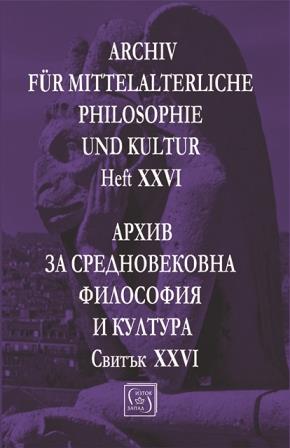
The paper answers in a systematic way the question of the existence and specificity of the concepts of philosophy in the culture of thought of the Eastern Roman Empire. It discusses the ambiguity of the term, the faces of theoretical philosophy, the competencies of philosophy, the philosophical-theological discourse, the relationship between philosophy and wisdom, as well as the definitions of philosophy.
More...
The present text outlines one possible interpretation of the Augustinian concepts of freedom and free will. What at first glance seems paradoxically incompatible within Augustine’s position, could be viewed as a result of his attempt to bring into line in the most consistent way the teachings of Scripture, especially of the New Testament, with the inherited powerful substantial-naturalist philosophical tradition of the Ancient thought. It is this specific hybridity of Augustine’s context that allows him to create a solid bridge between the classical Platonic-Aristotelian onto-realist philosophy of man and the Late Medieval philosophy of man as an ens morale.
More...
Although medieval presentational genres are often defined as part of the popular religious culture, they often demonstrate sufficient, if not superb, capability for dramatizing important and complex doctrinal cases. What is more, this very capability could be considered as a marker of dramatic excellence. Despite the fact that The Somonyng of Everyman (XVI c.) is in its entirety, not an original dramatic text (being a relatively close translation of the Dutch Elckerlijc), it deserves critical admiration for its theological embodiment. This article aims to focus on some specific examples of such an embodiment while taking into account the theatrical faculties of the text.
More...
Translation from the original Latin of the treatise by Nikolaus von Kues, Trialogus de possest.
More...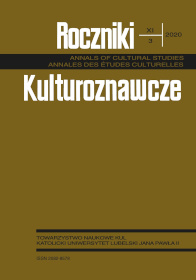
On 27 March, 2020, Pope Francis raised to the Lord a prayer of supplication in the name of the whole of humanity, seeking an end to the Covid-19 pandemic. In that occasion he gave an impressive homily based on the text of Mark 4,35-41, the famous account of the stilling of the storm. The present paper studies the triple attestation in the Synoptics (Matt 8,23-27; Mark 4,35-41; Luke 8,22-25), by considering the main difference on which it’s necessary to reflect with attention: Matthew reverses Mark and Luke in an important point. In fact, in Matt 8,26b, the injunction addressed to the wind and the sea falls after the question about the nature of the disciples’ faith, but in Mark 4,39b and Luke 8,24b the opposite happens: Jesus first calms the storm and only then asks the question about their faith. Why? With different strategies, all three Synoptics show that the disciples are men who, for all their slowness, will enter step by step into the anagnorisis of Jesus. In the course of the drama, the question with which the episode of the stilling of the storm concludes is really serious about Jesus’ identity. Beyond the differences of detail which emerge from the reading in parallel, the three Synoptics agree in conferring the same narrative emphasis on the disciples’ final question: “Who is this then, that even the wind and the sea obey him?” The question about who is this (τίς ἐστιν) forms the key query: if the Christological question continues after the description of the final solution, that means that, for the evangelists, the most important aspect is represented not by the miracle of the stilling of the storm but what that reveals about the identity of the protagonist of the story. The ultimate aim of the text concerns the identity of Jesus as God. The disciples are full of ὀλιγοπιστία because they are frightened of dying, not yet having learnt the perspective of eternal life: the one who speaks in the stilling of the storm is, yes, the Nazarene of history but still more the Risen One whom the great storm of death will have to obey in the morning of Easter.
More...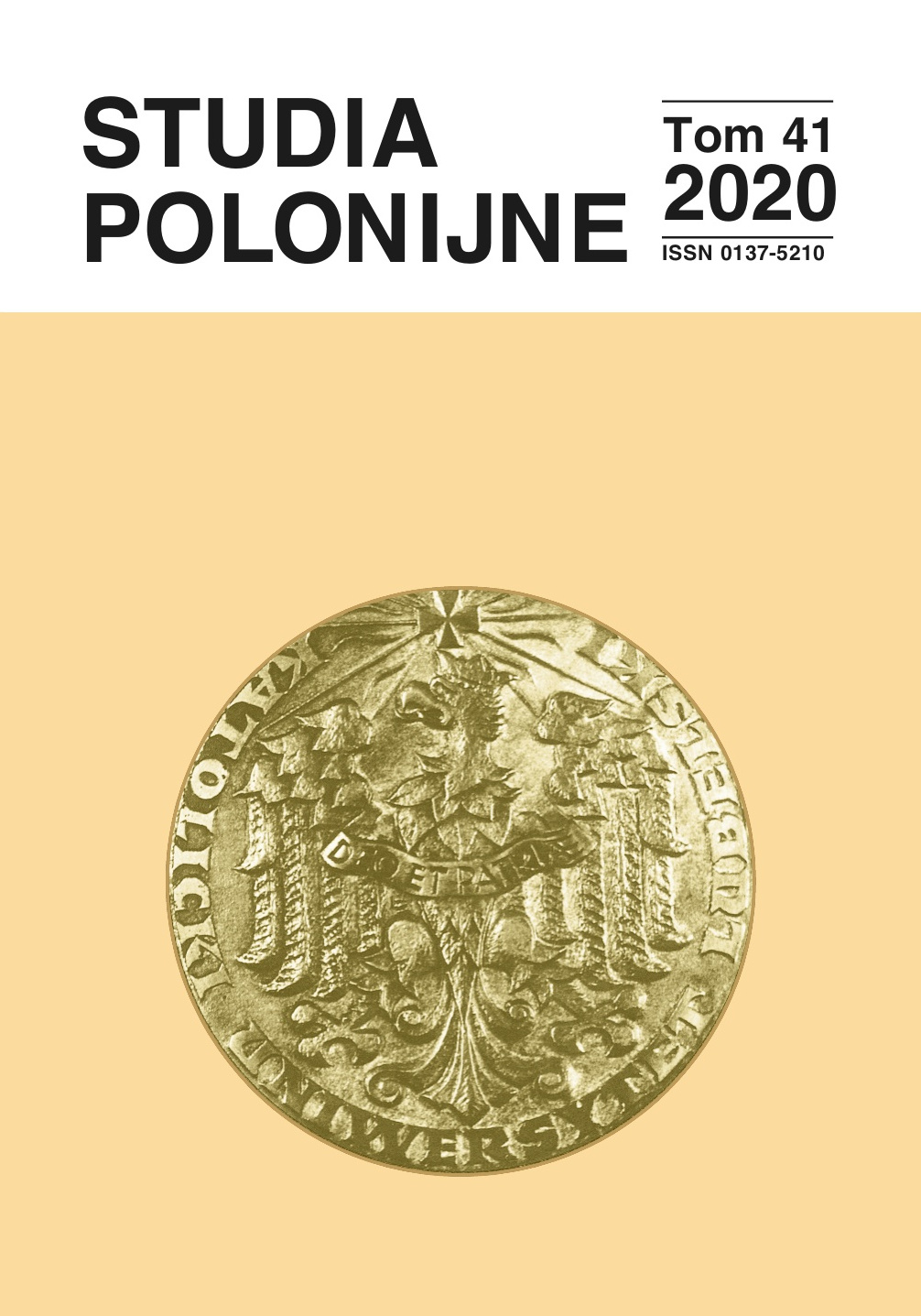
The aim of the article is to present the activity of the Polish Catholic Mission in France on the example of letters written by its rector, Fr. Leon Łagoda. The author analyses the content of this collection, referring mainly to the years 1929–1933. The collection sheds light on the pastoral and organisational activity of the Polish Catholic Mission in France. The author makes a clear distinction between the letters which Rector Leon Łagoda addressed to the faithful and the circulars, which were official texts intended for the clergy. A separate category constitutes letters addressed, for instance, to church hierarchs or those related to different celebrations.
More...
Polish Salesians regarded field priesthood as a seasonal charitable activity performed for the sake of neighbours. It was mostly a rank-and-file initiative of particular priests, which was tolerated by monastic superiors. During the First World War the work of the Salesians staying in Western Europe basically consisted in taking care of their compatriots in POW’s camps or hospitals. During the Second World War the priests staying away from Poland already worked as army chaplains both among the interned Polish people in Hungary and on a wandering and combat trail leading from the Soviet Union through Italy to Great Britain. Most of those priests stayed among combatant soldiers in England or the United States.
More...
The change of the border of Poland after the Second World War and the process of the relocation of Poles to the newly established Polish People’s Republic created a kind of melting pot in the Western and Northern Territories, in which transports arrived from the Eastern Borderlands, Central Poland and Little Poland, as well as from Western countries. In these lands abandoned by Germans, it was the emerging population and religious issues that had the greatest importance. In the post-war reality, the integration process was rather slow in these areas, but it must be noted that the establishment of the organization of the Polish church administration and the pastoral work of the Polish Catholic clergy were invaluable in this matter.After the war, Primate of Poland August Hlond returned to Poland on 20 July 1945, at a time when the fate of the state borders, of the system and, above all, of the Church, so severely afflicted by the war and occupation, was to be decided. The post-war reforms, which were introduced by communists and justified by democratic phraseology, were aimed at building socialist democracy. The church at that time suffered due to implementing land reform. Another clear warning was the annulment of the concordat by communists on 12 September 1945. As a result of Poland’s isolation from the West, Cardinal Hlond considered it necessary to make decisions about establishing Polish organization and the church hierarchy in the Regained Territories without cooperation with the Holy See. He thought that the German church administration could not be maintained in the former German lands. Moreover, he believed that these organizational and legal actions would prevent the communist government from creating areas without the influence of the Church, or from establishing Polish church organization completely dependent on communists, which was attempted in 1950.The establishment of the Polish hierarchy in place of the German was seen as lawless in Germany and partly in the Vatican as early as 1945. On 24 October 1945 Cardinal Hlond sent the document (40 pages) to Rome justifying his actions. He stated that seeing the objections expressed by Rome, he realized that he had misinterpreted the powers and instructions of Tardini obtained from the Pope. As a counter-argument, he described the situation in the Recovered Territories and explained that he had had to act quickly in church matters in order to prevent communists from making decisions in this matter, which would have happened if the German church administration had remained. Hlond’s report to Rome was factually credible, and his territorial divisions of the Church and the establishment of the apostolic administrations did not invoke the Pope’s intervention. Soon it transpired that Hlond’s actions were convenient for the Vatican, and thus he saved Catholicism in one of the countries of the Soviet Bloc. That is why Hlond was never disapproved by the Holy See for what he had done. August Hlond’s beatification process began in 1992. It ended in 1996 at the diocesan level. The Federation of Expellees and the German episcopate were against Hlond’s beatification. In 2017, the Theological Commission of the Congregation for the Causes of Saints gave a positive opinion about the Positio of 2008. In 2018, the same was done by the cardinals and bishops of the Congregation for the Causes of Saints. On 19 May 2018, Pope Francis signed a decree on the heroic virtues of Cardinal Hlond. Since then he has had the title of the Venerable Servant of God.
More...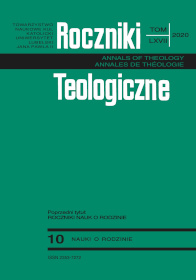
Building and transmitting vocational culture is among the primary duties of the Christian family. Vocational culture is composed of all actions supporting the work of awakening vocations to the priesthood and consecrated life. Characteristic elements of this culture are: deep religiosity, awareness of the Church mission and the correct vision of vocation. The family builds and transmits vocational culture through a conscious and consistent process of formation according to Christian values and models of behaviour. It thus answers the general call to love and holiness. It is aptly named the Home Church, the first seminary, and the treasury of vocations. The holiness of families is the main condition for the growth and maturation of authentic vocations, and the most appropriate answer to the modern crisis of vocational culture.
More...
The modern family undergoes various transformations at many levels: morality, tradition, or customs. The whole body of these customs, accumulated over centuries, has always been a great value and refuge for many generations. The times in which we live today bring many changes. The most important factors seem to be cultural, ideological, social or demographic ones. Given such changes, the family must not be a place where the life that begins in it is rejected and annihilated, parental roles redefined, with the duty to raise children transferred to mass media or dangerous ideologies. It is necessary to take action to protect the identity of the family, to build its unity and marital communion for the sake of man and the society in which he lives.
More...
A family care in a spiritual and religious aspects in experiencing existential difficult situation of the cancer in terminally stage of the relatives belongs to holistic dimension of palliative medicine and hospice care. A complementarity of impact of both determine activity in all fields of cancer illness: somatic, psychological, social and spiritual. All of them needs a teamwork with the adequate skills and qualifications, appropriate competence and experience. A subject of this article points out for spiritual and religious aspect of support the family member at the end of life loves one on the basis of own research in Good Samaritan Hospice in Lublin, Poland.
More...